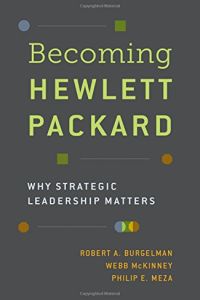Join getAbstract to access the summary!

Join getAbstract to access the summary!
Robert A. Burgelman, Webb McKinney and Philip E. Meza
Becoming Hewlett Packard
Why Strategic Leadership Matters
Oxford UP, 2016
What's inside?
Hewlett-Packard prospered for seven decades because its founders built the company to evolve.
Recommendation
A company that lives a long time must remain in “a state of becoming,” say authors Robert A. Burgelman, Webb McKinney and Philip E. Meza. A firm that maintains its flexibility can adapt repeatedly to changes in technology or in the market. Because Hewlett Packard’s (HP) founders and subsequent leaders made the ability to change into an intrinsic part of the corporate culture, the company has thrived in several fields, including instrumentation, computers, printers and IT services. The authors analyze how successive CEOs bolstered or undercut HP’s ability to evolve. getAbstract recommends this enlightening, often absorbing history of HP’s executive strategies to entrepreneurs and senior managers.
Summary
About the Authors
Robert A. Burgelman, the former executive director of Stanford University’s Executive Program, is the Edmund W. Littlefield Professor of Management at Stanford Business School. Consultant Webb McKinney has held engineering and management positions at HP. Consultant and researcher Philip E. Meza focuses on technology strategy and business development.



















Comment on this summary